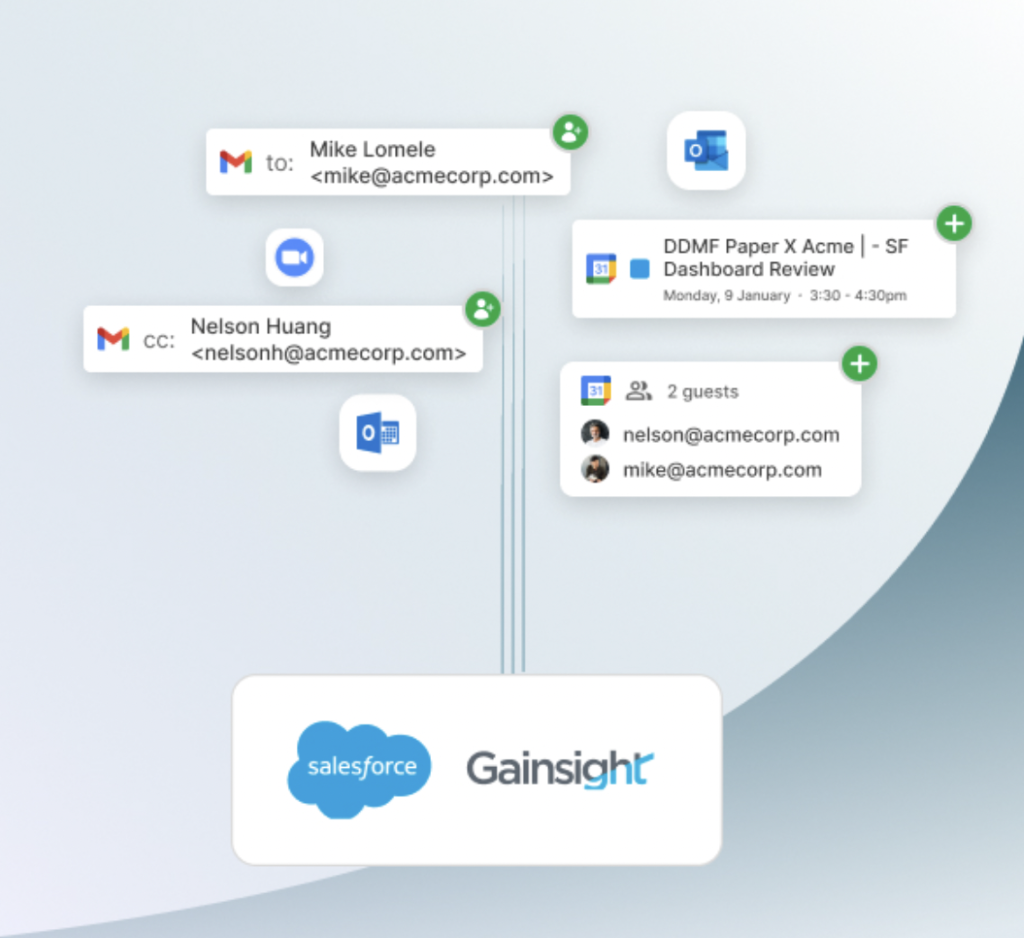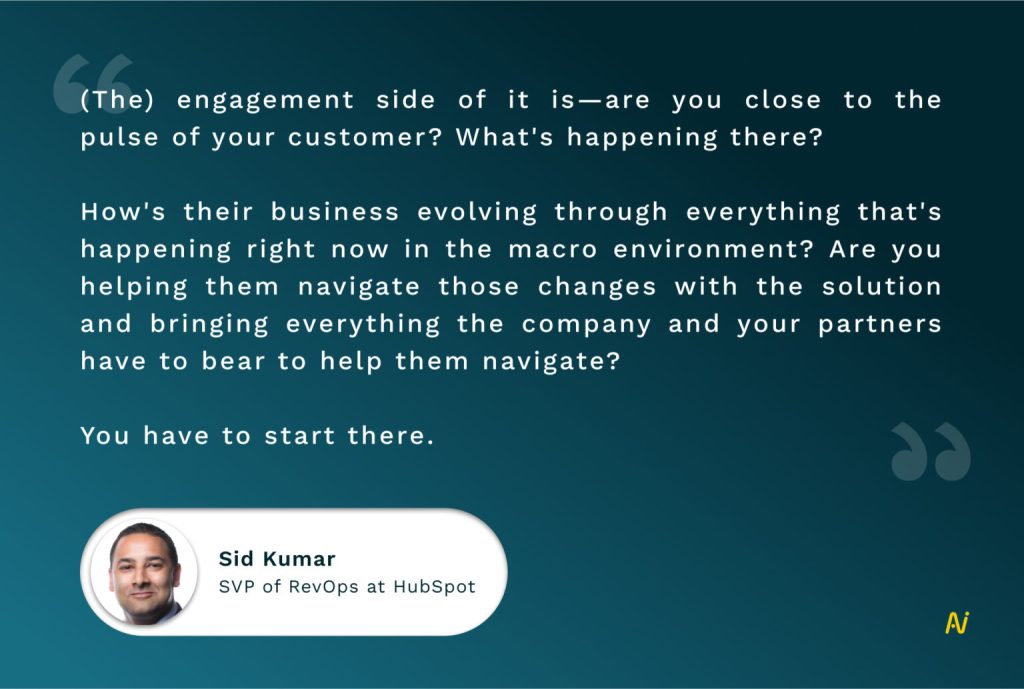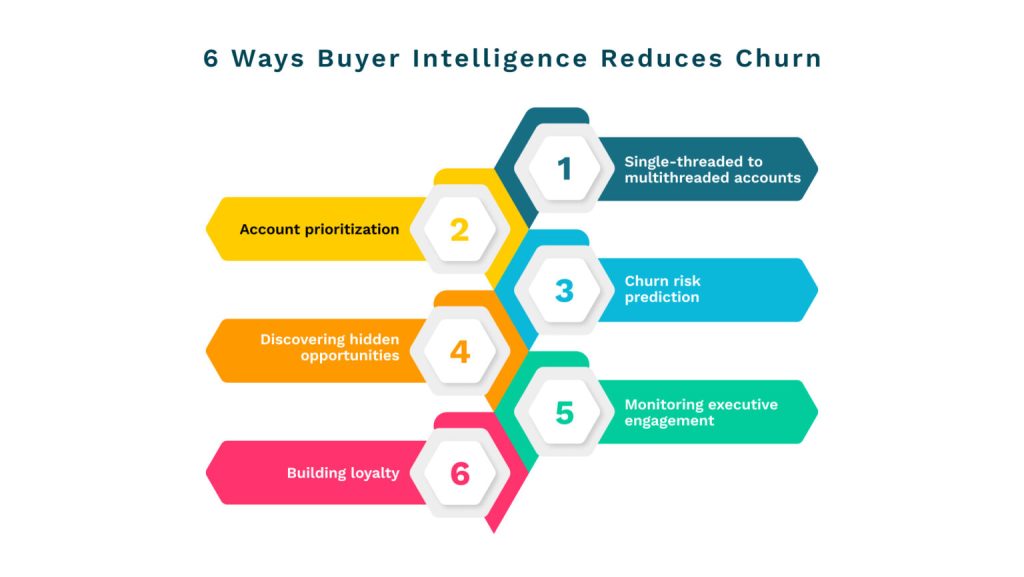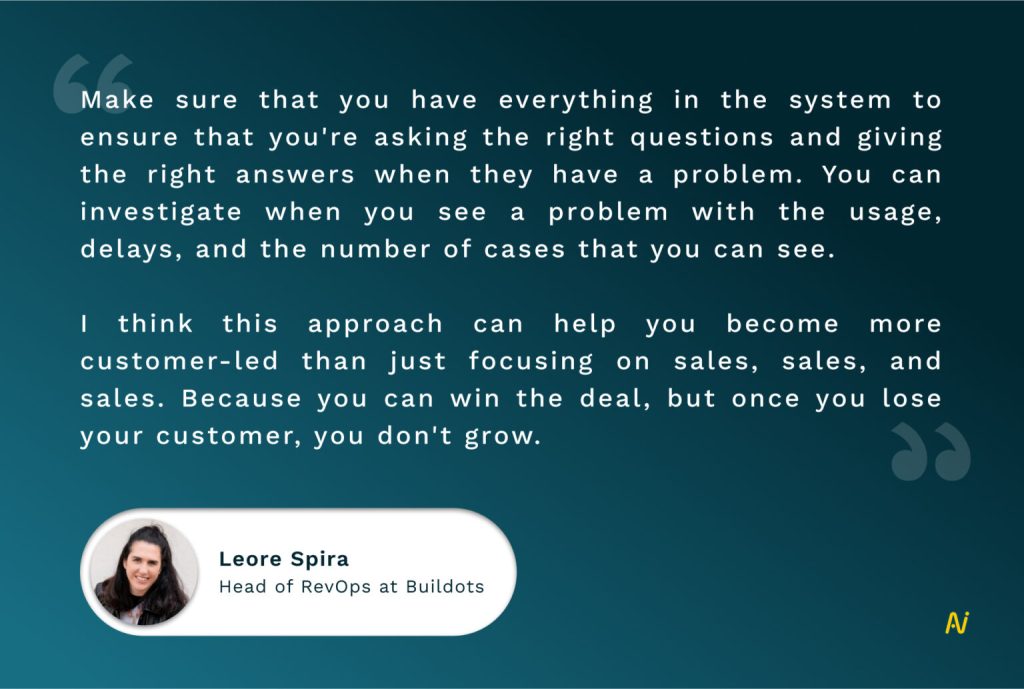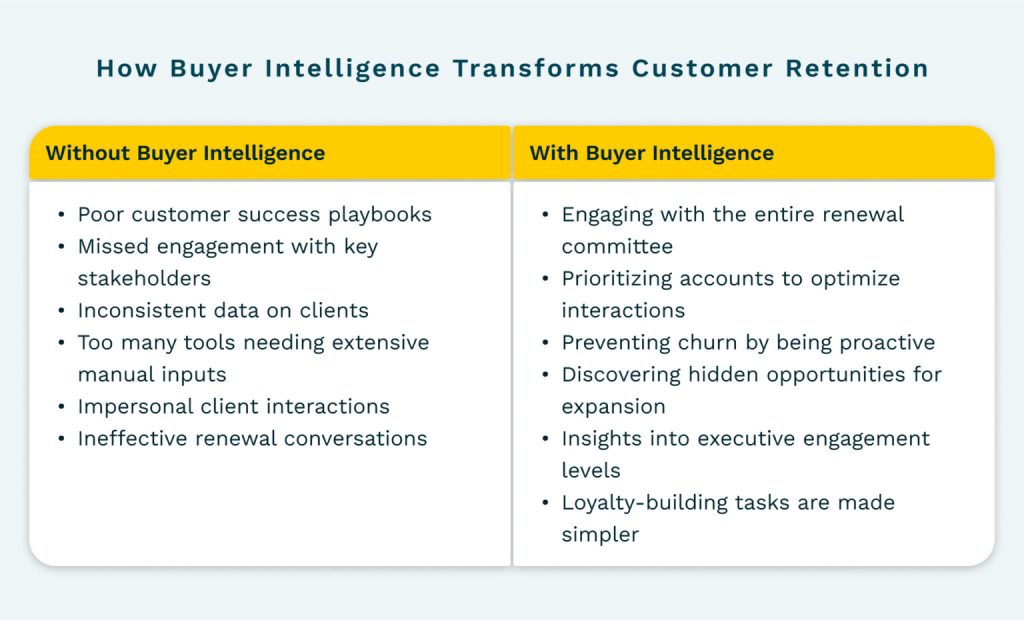Here are six ways in which buyer intelligence could reduce churn:
1. Single-threaded to multithreaded accounts
Poor quality data leads to 56% of CRM users losing existing customers.
Owing to incomplete information, CSMs may know who is the day-to-day point of contact. However, they may not know who is involved in deploying and using your solution.
There could be multiple stakeholders involved in using your solution.
For instance, your champion may be a part of the IT team. But, extended users may include the finance, marketing, and legal departments.
Plus, new business and operational requirements may pop up.
This involvement naturally extends to the renewal process, too.
It becomes even more important to know who is part of the product usage process when the end user is not the same as the buyer. And therefore, the renewal committee may evolve and look much different than the original buyer committee.
Buyer intelligence adopts a granular approach, creating personalized user journeys for each stakeholder.
CSMs interact with all stakeholders in the renewal committee. They can not only identify individual pain points but also solve them.
You can also discover hidden renewal team members. B2B buyer intelligence enriches customer accounts with contact and account-level activity data.
These data points are gathered from multiple channels. You can scan connected tools, including Slack and video conferencing for relevant contacts.
With more complete information on each account, CSMs can easily monitor its breadth and depth to build a more precise account map.
2. Account prioritization
While CSMs identify all the stakeholders involved in each account, they also need to prioritize accounts to engage with. It helps you optimize resources across accounts rather than spreading them thin.
To identify which accounts are most likely to grow in value after continued engagement, you need clear visibility on:
- Account data on the company, people involved, intent level, and the overall account map.
- The day-to-day customer success activities.
- Engagement levels at contact and account levels.
- Top use cases for each account.
You can find out what each account and individual stakeholders are interested in and do a deep dive into their pain points.
Once you have these data points in place, it becomes easier to figure out the appropriate steps to deliver on (and even exceed) customer expectations. You can then guide them through the correct use cases with your product.
Your customer success team focuses on approaches that meet the renewal committee’s needs. They can share recommendations and let clients make decisions with higher confidence.
By incorporating account prioritization into customer success workflows, you can optimize your playbooks.
Finally, identify gaps where coaching could encourage CSMs to pursue the right accounts at the right time.
3. Churn risk prediction
The global benchmark for customer churn is 5%. Yet, 30% of companies face a churn rate much higher than that.
How can you differentiate yourself from them?
Buyer intelligence can help with predictive analytics.
Transform your customer success team from being reactive to proactive. Instead of chasing churn at the time of renewal, predict and prevent churn.
For most businesses, the top three measures for predicting churn are:
- Product usage data
- Indication of low engagement
- Customer health scores
Another reason for churn that should be widely discussed is champions leaving the client account. If a champion leaves, CSMs have to rebuild the relationship from scratch. Or else they could lose the account if they haven’t engaged with other stakeholders effectively.
Keep a close eye on the above four factors to predict churn.
You can identify at-risk accounts or churn opportunities to convert them to long-term clients.
One way in which AI helps is through alerts. You receive quick alerts when a champion leaves. Plus, you can track the champion’s movement. It lets you figure out if they’ve moved to another customer or lead account.
Relationship intelligence also shares predictive insights on who could be your alternative champion. So, you can start building a relationship with the backup champion even before your champion leaves.
Churn prediction identifies KPIs and engagement traits influencing churn the most. You can figure out the common patterns across your accounts and plan countermeasures.
Some examples of these patterns could be a drop in product usage for a particular audience segment. Or there could be an increase in tickets for specific product features.
At the same time, you can also monitor customer behavior relative to:
- Market changes
- Market awareness
- Economic, organizational, and structural changes
With the capability to predict churn, you can guide CSMs to take timely action to win back at-risk accounts.
They can identify next steps that are otherwise hidden in conversations. These could be over calls, video conferences, and emails. CSMs can then create incremental activities for improving customer experience.
Use churn prediction to determine winning engagement patterns and replicate them to optimize customer success interactions with clients.



